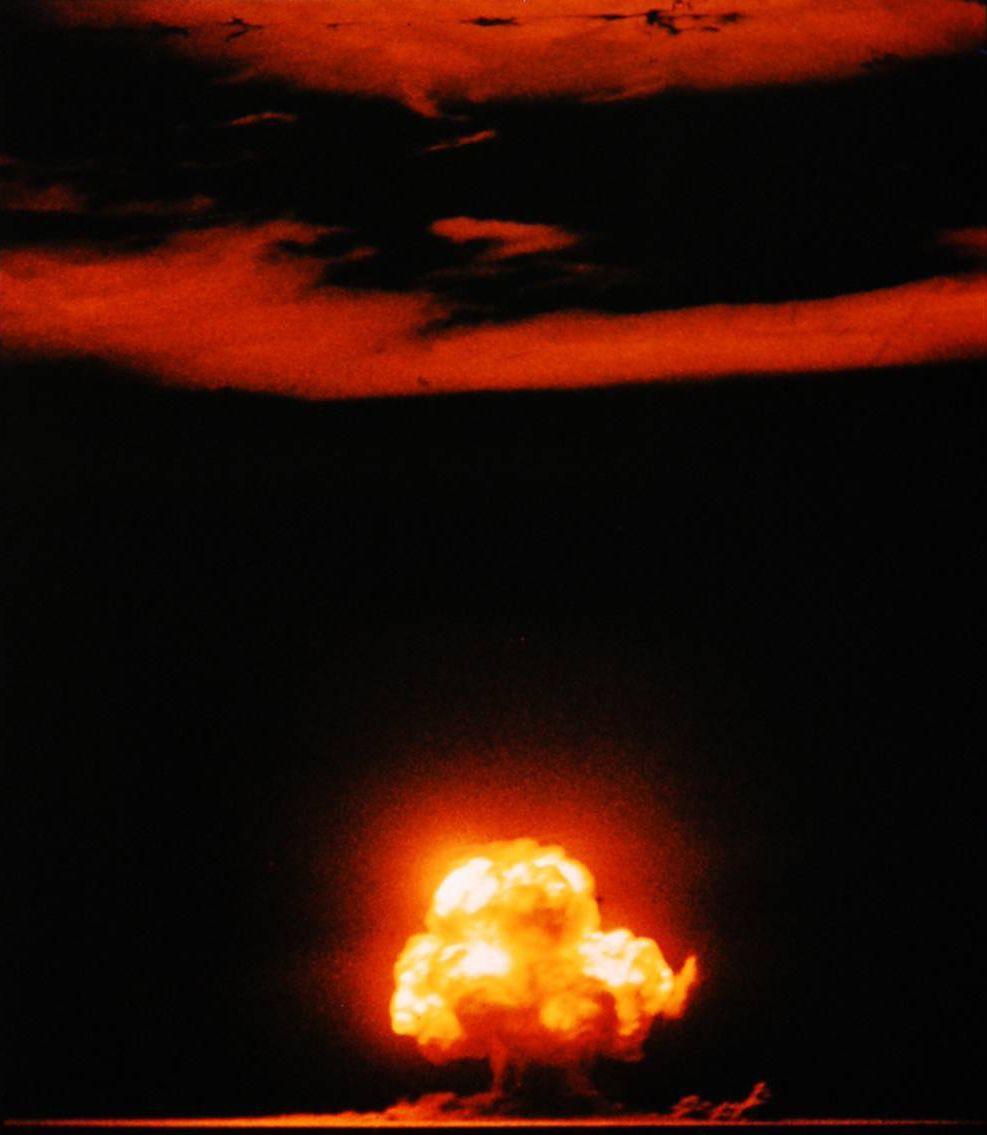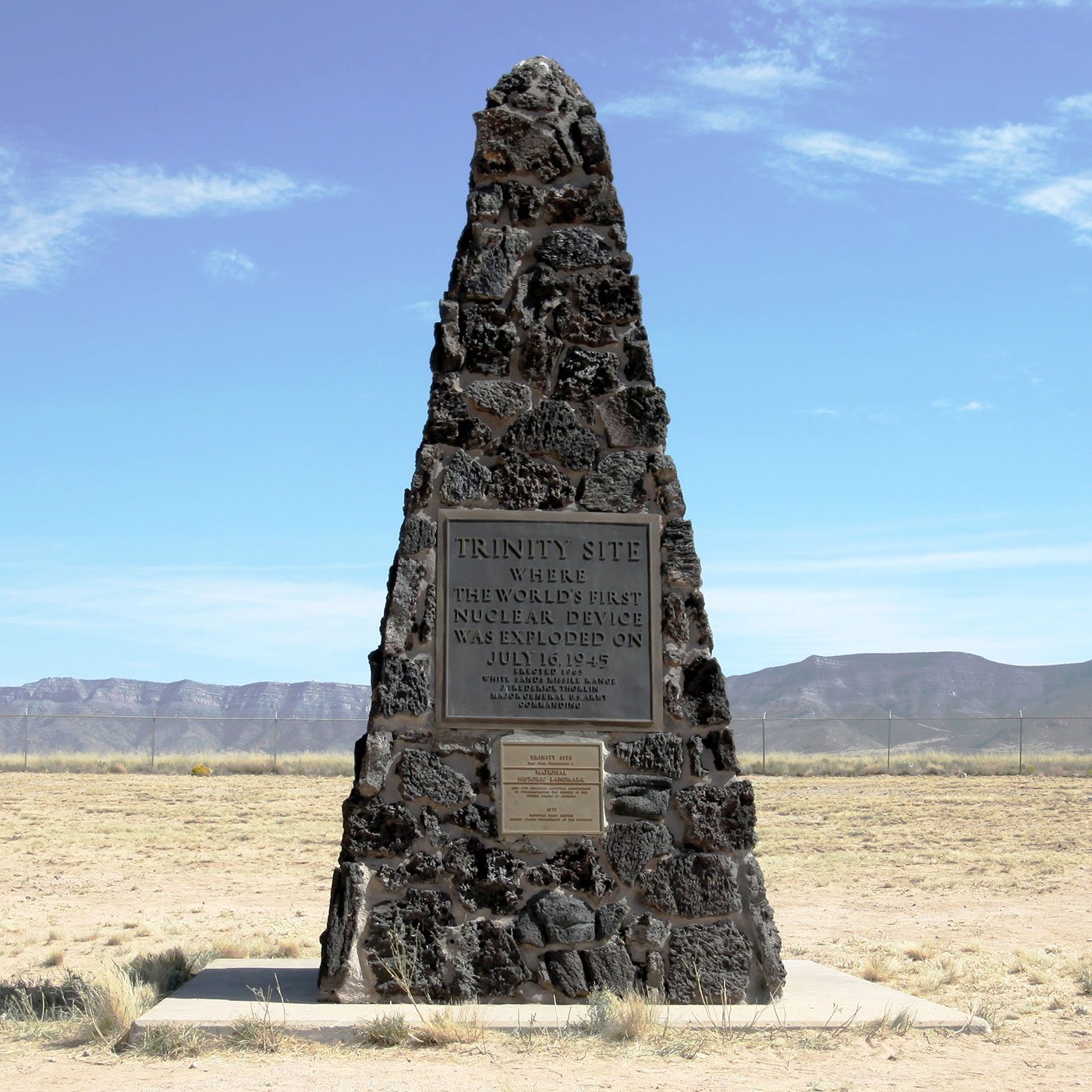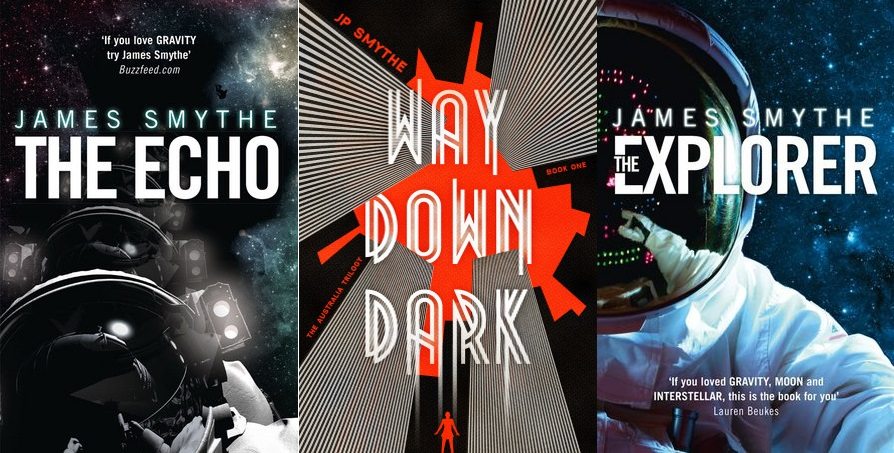
Early in the morning on July 16, 1945, the world’s first successful detonation of an atomic bomb occurred at the White Sands Proving Ground in New Mexico. The Trinity Test proved that atomic bombs could work and ushered in the atomic age.
The bomb, which was detonated at 5:29:21 AM Mountain time, exploded with the force equivalent to 20 kilotons of TNT. The sand at ground zero was melted into a new light green glass, subsequently dubbed trinitite. The explosion created a mushroom cloud 7½ miles tall, with a shockwave that was reportedly felt 120 miles away.
Years after the detonation, Oppenheimer described his feelings at the time: “We knew the world would not be the same. A few people laughed, a few people cried. Most people were silent. I remembered the line from the Hindu scripture, the Bhagavad Gita; Vishnu is trying to persuade the Prince that he should do his duty and, to impress him, takes on his multi-armed form and says, ‘Now I am become Death, the destroyer of worlds.’ I suppose we all thought that, one way or another.”
A friend of mine, Chris Griffith, has spent years studying Trinity and the early atomic tests. He maintains several websites, including trinityremembered.com, and agreed to answer my questions about the test.

GeekDad: What is your interest in the Trinity test?
Chris Griffith: It is really about preserving and understanding the atomic age as a whole. The Trinity test was the culmination of years of research and nearly $2 billion in costs, so focusing on it was a natural choice.
My interest in the topic actually springs from my time at University of California, Santa Barbara, where I graduated with a degree in physics, but also a certificate in Global Peace and Security. From a very humble HyperCard project (yes, that long ago), the project has morphed and adapted to a wide range of platforms. But the end goal is really about providing a resource that students and interested people can use to understand the atomic age, and make more informed choices about nuclear issues. Both trinityremembered.com and hiroshima-remembered.com were created a decade ago for the 60th anniversaries, more a focused experience about those events. I enjoy getting the requests from students asking to use some part of the site in a paper, or presentation. Once in a while, we even get credited in a book.
GD: Besides the obvious “it was the first atomic bomb detonation,” what do you think is the historical importance of Trinity?
CG: From the scientific side, it was one of the greatest physics experiments ever conducted. It validated so many of our atomic theories. But it also changed the shape of our history, as we now truly had the power to end civilization as we know it. The discovery and testing of the atomic bomb lead to the dangers of the Cold War. It changed the shape of warfare forever.
Often forgotten were the positives that came from the Manhattan Project. So many advances in computing were borne out of the needs of the scientists. And to some degree the space race was an outcropping of the atomic age as well. The Mercury and Gemini flights were on the same missiles that could carry nuclear weapons.
GD: The site contains a lot of great historical imagery and what seem to be interviews. How did you gain access to all of that?
CG: One of the nice things about this project is many of the images and footage was produced by the U.S. government, so it is just finding the right contact at the various labs. My mobile phone has some interesting contacts in the address book.

GD: Is the Trinity test site open to the public? Is there enough there to be worth a visit if you’re in the area?
CG: Surprisingly, I have not made it to the site. Currently the site is open twice a year, once in April and again in October. I want to go, but I seem to have a conflict every year. There are still some artifacts remaining, in addition to the obelisk at ground zero. The site is remote, so you are going to have to plan to be in the area on those two Saturdays.
GD: Your website, trinityremembered.com, was funded by a National Science grant. Can you talk a little about the process of getting a grant?
CG: We were a part of a combined effort known as the Nuclear Pathways Project, which was a combination of several atomic-related sites. Part of the effort was to looking for a solution to searching for key terms in a highly dense keyword site. It was a fun project. The actual grant process was quite involved. Our lead investigator, Dr. Frank Settle, had a good relationship with the NSF, so he was able to navigate the process. That was a while ago. Much of the current effort is done solely as a labor of love. I am hoping to have the refresh for hiroshima-remembered.com done before August 6th [the 70th anniversary of the bombing of Hiroshima], but I might not make it. I am considering a crowd-funding appeal to help upgrade atomicarchive.com.


